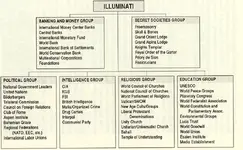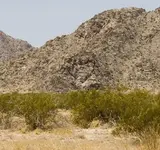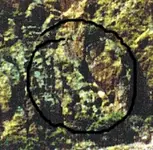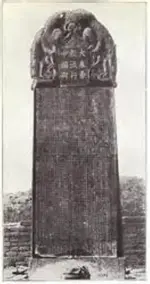Hola amigos;
This got to be pretty long winded, as usual for me, so I have to ask your indulgence again.
John_Arizona wrote
well non the less, with all this sing song for many years.... seems to me that you would have some factual proof... anybody can talk the talk
The question to "show what treasures you found" seems logical enough, but is it? If the treasures are found, what is left to hunt for? Wouldn't it be a real waste of time to go hunting for a treasure that was dug up and
removed years ago?
Several impressive treasures HAVE been found, and posted here; the massive one found in Brazil even became a hot topic of discussion for lawyers around the world as to who or whom would be the legal owners as it was found on private property that formerly had been the Jesuits, but discovered by contractors tearing down the place. I have not seen anyone try to convert the values listed in that one to modern prices, but it would be
huge. $$$$$$ Then there was the treasure found in a single Jesuit college in Spain - not in every college, just that
one. Another was found in Sardengha, hidden in a cave, but in that case it was found by the govt and seized by them.
A Catholic study done on the wealth of the Jesuits as of the date of their expulsion from Mexico lists a LOT of property, not to mention their vast herds of livestock, their own ships, but this compiled list (it is online at JSTOR
http://www.jstor.org/discover/10.23...2&uid=70&uid=4&uid=3739256&sid=21104139849947 )
...includes a number of mines. What do silver mines produce? Silver right? And gold mines produce gold, correct?
Where is the silver and gold produced by the known Jesuit mines? The Spanish were not able to find it, and there is no record of what happened to it. Then there are the "legends" of Jesuit mines in Pimeria, several of which were found and are
NOT lost. These mines were mostly silver but a few gold as well. There is evidence of smelting and casting at several of the missions, so we know they were processing ores from mines.
Where is the product of that smelting and mining? Not even the
BELLS, which are pretty well known to have been made at the missions, can be found today! Not to mention the impressive silver altar and ornaments seen at San Xavier del Bac. So we are pretty certain that
the Jesuits were mining and smelting metals, yet no one has found the metals they produced, to this day. We can point to several impressive treasures found at other Jesuit locations like the case in Brazil or the college in Spain etc which shows that the Jesuits did amass treasures and concealed them.
As has been pointed out, some treasure hunters are
very close-mouthed about what (and where) they have found. There are good reasons for this too, like not wanting a court battle with some religious order or other claimants that might try to take treasures away from you. Also if the treasure hunter bent or broke the law(s) in getting a treasure out, they are not going to spout it on the internet about what they did.
This has been posted before, but you can literally
stand in some of the old "legendary" Jesuit mines like the Salero for instance. The mine is a fact, and was rediscovered by treasure hunters over a century ago. Some of the mines were found, according to the sources, by following directions on Jesuit documents which were discovered at the old missions. I don't know how much more solid you can get. Would you go treasure hunting to find the lost Salero mine, knowing that it is
NOT LOST? It
was a lost, "legendary" Jesuit mine for a century or so.
http://wms.mytopo.com/wrap/netmapwr...4631,3495214&srs=EPSG:26912&format=image/jpeg
Salero, a lost Jesuit silver mine that was found in the 1800s and re-opened
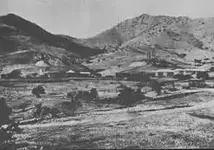
A number of other mines were known and documented, that have never been found again. Anyway this is what is flawed about the question to see what is found - if it is found already, it is kind of
pointless to search for it right? There is not an unlimited number of treasures and mines after all.
So we have "legends" of Jesuit treasures, a widespread pattern of the Order in amassing treasure and properties, not to mention open disobedience from the laws of Spain (and France, Portugal etc) clear evidence of smelting activities at several Jesuit (and also later Franciscan) missions, including the casting of BELLS, a string of silver mines in southern Arizona which the finders claimed they found by the aid of Jesuit documents, and not even
ONE BELL to show for all that activity. Not to mention where oh
where is that copper mine, which produced the copper used to cast those missing BELLS? Yes we know that the Spanish authorities searched for Jesuit treasures, with but little success, yet this supposedly great search apparently
never occurred in Pimeria Alta at all. Plus if there were NO reason for the Spanish to be searching for Jesuit treasures, why would they have bothered?
The Jesuits were evening producing COINS, by permission of the Spanish royal govt; these were to be made from the METALS THEY HAD OBTAINED IN THE AMERICAS and these coins became quite a scandal for they were below standards for the amount of precious metals the coins are (were) supposed to have. Now one might ask, how could the Jesuits be coining money, even with permission, if they had NO precious metals to make them from? The precious metal was not provided by the Spanish crown, it came from the Jesuits own operations!
Of course if this is not enough of a "smoking gun" for you,
no one is going to force you to go hunt for Jesuit treasures either. You can always hit the local city park, and not have to spend time poring over old books, archives, Spanish documents or worse Jesuit documents written in Latin, which is part of what you have to do to have any chance at finding a treasure hidden by missionaries several centuries ago.
Joe - I realize your desire to focus on Jesuit activities in Pimeria Alta ONLY, yet then we would have to dismiss the eyewitness testimony of your favorite source for what he saw of the infamous expulsion and ensuing search for treasures, which occurred not in Arizona or Sonora but more likely Mexico city. As our mutual amigo Mike has pointed out, the Society of Jesus was not operating in complete isolation at any place they were working; in fact even in rather remote little visita churches the padres had managed to import valuable paintings to decorate them, from China or possibly even Japan. Also, almost everywhere the Jesuits did operate, whether in Mexico, Bolivia, Brazil, Argentina, Quebec, Louisiana, even Goa and the Philippines, there are also "legends" of Jesuit treasures and/or mines. Not in every place, but a good many, and these "stories" are not identical either, except in the cast of players being the padres and their lay brothers. The events of Pimeria Alta did not follow the exact same way that things played out in Baja nor in Mexico city or Panama, as with the "roundup" being more like a joke, the padres were simply sent word to come in, and they came in. We do not know how long it took for them to comply, and there is NO evidence that any kind of determined search was done at any of the missions (or visitas like Tumacacori, Calabasas, Arivaca etc) certainly not for months. The Franciscans did an inventory of the missions on their arrival in 1768, and they found very little of value left at any of the missions. Some obviously had been absconded with, but the rich ornamentation and decorations reported by Nentvig and Och at EVERY small and remote visita, were nowhere to be seen.
So where are the profits from the many business ventures of the Jesuits, from cattle ranching to sugar refining and mining? What about the copper bells? We know that the bells cast at Tayopa became famous, one ending up in Alaska and were known to contain a rather good amount of silver along with the copper. Clearly bells were being cast at Guevavi and Tumacacori, yet where are those bells? Why is there NO mention of any such activity by the Franciscans, if they were the men responsible?
Good luck and good hunting amigos, I hope you find the treasures that you seek.
Oroblanco







